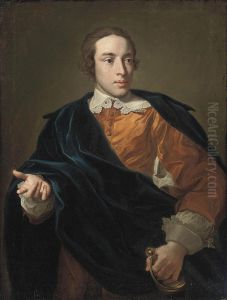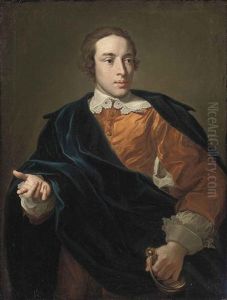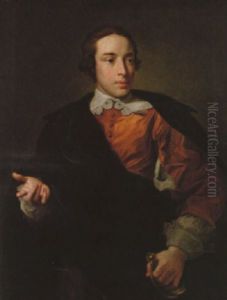Thomas Jenkins Paintings
Thomas Jenkins was an influential British art dealer, banker, and painter of the 18th century, though his fame primarily rests on his role within the context of the Grand Tour rather than his artistic output. Born in 1722, Jenkins became a key figure for wealthy British travelers in Rome, where he settled and established himself not just as an artist, but more significantly as a facilitator of art collection and as a cultural intermediary between Britain and Italy.
Jenkins moved to Rome around the mid-18th century, at a time when the city was a central destination for the Grand Tour—a cultural expedition undertaken by young aristocrats of the time to acquire classical knowledge and art. He capitalized on this influx of British travelers by providing services that ranged from acting as a tour guide to dealing in antiquities, and advising on and facilitating art purchases. His deep understanding of art, coupled with his banking and financial services, made him an invaluable resource to his patrons.
In addition to his activities as an art dealer and banker, Jenkins dabbled in painting, although his artistic work has not garnered significant historical attention. He was more renowned for his connections and influence in the art world, which enabled him to facilitate the acquisition of many important works of art that would eventually find their way into British collections, greatly impacting the art holdings of the British nobility.
Jenkins' role in the art world of his time extended to his involvement in archaeological excavations. He participated in and sponsored digs in Rome and its environs, contributing to the discovery and restoration of classical sculptures and other antiquities. These activities further solidified his reputation as an expert in ancient art, making him a central figure for any British traveler interested in classical culture and art collection.
Thomas Jenkins died in 1798, leaving behind a legacy as a key facilitator of cultural exchange during the era of the Grand Tour. His influence had a lasting impact on the dissemination of classical art and ideas to Britain, as well as on the formation of many significant British art collections of the time.



